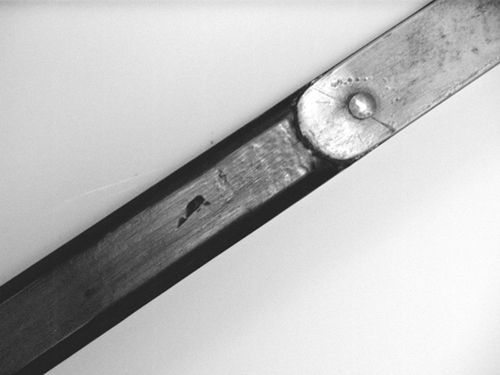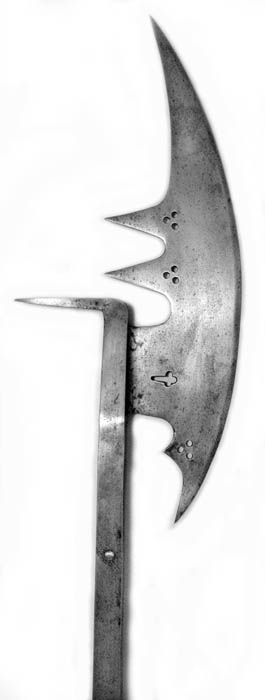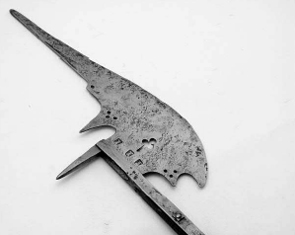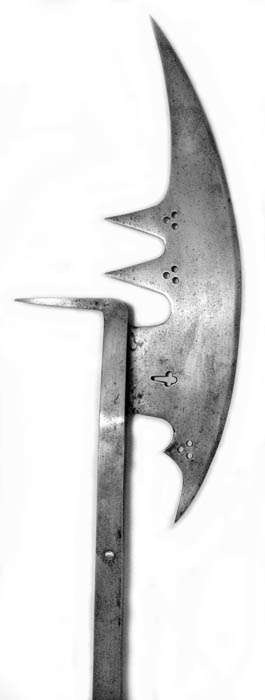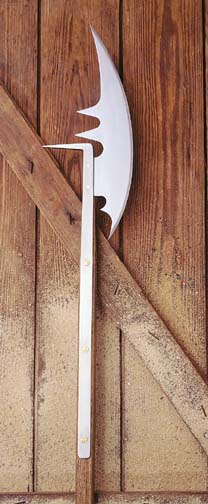Posts: 5,981 Location: Birmingham, Alabama
Fri 19 May, 2006 7:54 am
Hey, George! I don't have any other angles on the head, but since you owned the head, maybe you'll be able to picture the mounting when I say that above the bottom of the langets, all wood surfaces sit flush with the steel. The photo below, while truly awful, will at least give you some idea of how I inset the bottom of the langets and shaped and antiqued the haft. This piece helped me understand why there were carpenters who specialized in hafting polearms. When you start insetting langets and dealing with different levels at the head end, it can be challenging to previsualize how all the levels and surfaces will interface once the head is mounted.
Basically, I had to plane down a 2x2 so that the area of the langets was recessed, then I had to create a long pyramid shape at the top of the haft. The base of that pyramid needed to be flush with the level of the langet platform on two sides, but needed a shoulder on the other two sides. I found that the best solution was to leave lots of material extending beyond that shoulder and beyond the langets. After I had mounted the head and rivetted the langets I went back with the block plane and shaved down all the protruding wood. Then I sanded everything so all wood surfaces would be flush with the steel. Given the amount of shifting that could occur during mounting and rivetting, I think there was no other way to get the surfaces perfectly flush. If I had screwed up the final planing, I'd have been out of luck , though. All this meant that I had to antique and stain the haft only after mounting the head, and that was kind of a pain. I would hesitate to speculate how many hours I have invested in this piece, but the haft certainly was the most challenging part of the project.
The final test consisted of slipping my hands up and down, from below the haft over the join with the langets and up to the head, and that revealed no snags or problem surfaces.
 Attachment: 88.22 KB
Attachment: 88.22 KB
